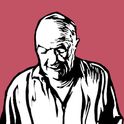I arrive at Cornelia Parker’s north London home to find a frenzy of activity: the plumber is fixing the washing machine, and Parker is anxious to sort out a pile of smelly socks. There is also the matter of Parker’s upcoming exhibition at Tate Britain in May, which will showcase works from the past 35 years of her career. With her distinctive bob haircut, she is a recognisable face throughout the art world—she tells me broadcasters often approach her when they’re trying to find the “female equivalent to Grayson Perry.”
At 65, it’s clear that Parker’s enthusiasm for making art is undiminished. We head up to her studio—“more my command centre,” she says—where she is editing a new video work for the show. It features a Union Jack being made and then broken apart at the Red Dragon flag factory, near Swansea. The work’s political overtones are obvious, as you might expect of someone who once took on the unusual role of official election artist for 2017 (commissioned by parliament to create an artwork about the poll). I ask her if that experience changed her approach. “It’s been political for quite some time already,” she argues, alluding to an interview she did with Noam Chomsky on climate change back in 2007.
Being an election artist involved going on the campaign trail and attending party conferences, often in the press box sandwiched between Robert Peston and Laura Kuenssberg. “The Ukip conference was terrible!” she recalls gleefully. “I got it all on film.” The Tate exhibition will also showcase some of Parker’s best-known installation pieces like Cold Dark Matter: An Exploded View (1991), in which a garden shed is blown up into thousands of parts. Many of her installations are made with a specific place in mind: does taking them out of that context change how that work will be seen? “The sense of place is really important,” she says, “and I still make site-specific work. It’s just that the site is now the shed or the flag factory.”
“That’s all done,” says the plumber. Parker steps out to pay him. Behind where we have been sitting, I see she has created a model of the Tate space, with pictures of the works to be shown stuck inside.
Exhibiting at the Tate has been “a dream” of Parker’s since she was 15; it was school trips to London’s galleries that sparked her interest in art to begin with. “It just showed me a world I hadn’t thought accessible to me, as a working-class person.”
For an artist known for working in so many mediums—film, photography, installation and performance—except for painting, Parker cites a surprising number of painters as her formative influences. “Magritte, we all love Magritte,” she says; Jan van Eyck’s Arnolfini Portrait is another favourite. It was at college she first looked at sculpture, and “that was very exciting, because before I always saw sculpture as very technique-orientated.” Learning about Christo and Jeanne-Claude showed her there was another way. “I’m drawn to the idea of art being a bit more transient,” she says.
Given all these influences, I ask Parker if there have been any constants across her career. One thing is getting out of the studio. “I’m just nosey,” she says, “Nosey Parker. In a way, the work is just a flimsy excuse to meet some people and hear about their lives, you know? Perhaps I’m really a journalist.”
We finish up, and I leave Parker to carry on editing her new film in peace. But first she’s off to stuff the smelly socks into the washing machine.














